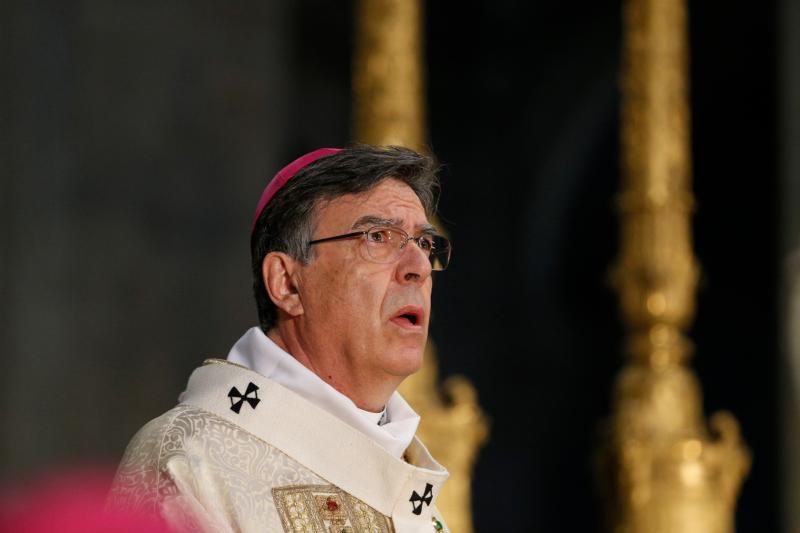By Christopher White, The Tablet’s National Correspondent

NEW YORK – Resurrection Sunday in Paris this year served as a reminder that, for Catholics, salvation and new life are the essence of their faith.
In his Easter homily, just six days after a fire ravaged the city’s historic Cathedral of Notre Dame, Archbishop Michel Aupetit said that saving the body of Christ, in the form of the Eucharistic host, was the first question that crossed his mind as rescue efforts were underway last Monday night after the fire broke out.
Recalling the scripture passages where the disciples of Jesus come to find an empty tomb, Archbishop Aupetit recounted that “‘The Lord is taken from his tomb and we do not know where he was laid’ is Mary Magdalene’s breathless testimony to the two apostles Peter and John.”
“‘Where is the body of the Lord?’ This is the question that arose on Monday evening at the height of the Notre-Dame de Paris fire: ‘Where is the body of the Lord?’ It was necessary to save the cathedral, the treasure, made up of the pieces of silversmiths’ work accumulated over the centuries. It was also necessary to save, for the believers, this infinitely precious relic: the crown of thorns of Jesus brought back by King Saint-Louis,” he continued.
He then repeated a line that he used in numerous interviews over the past week – a reminder that the grand cathedral was not built to house its treasures, but that of the body of Christ: “It is for this Body, veiled under the appearance of a crumb of bread that this cathedral was built.”
“What is more precious? The cathedral, the treasure or the bread crumb?” he asked.
Archbishop Aupetit celebrated Easter Mass at the Church of Saint Eustache in Paris – just over a mile from Notre Dame, which dates back to the 13th century but whose current structure-Gothic on the outside, with a Renaissance and classical style interior – was built and rebuilt during the sixteenth and seventeenth centuries.
While he said that rebuilding Notre Dame is a priority, he emphasized that such efforts cannot overshadow the very reason for its existence.
“We want to save the cathedral,” said Archbishop Aupetit. “This splendid setting was intended to be the magnificent manifestation of the human genius that pays homage to the love of a God who gives himself out of love and who, to give himself, made himself one of us.”
The archbishop also paid tribute to the firefighters and their priest chaplain, Father Jean-Marc Fournier, who rushed into the inferno to salvage the relics and the Eucharist.
“He [Fournier] too took risks to save a crumb of bread because it was the risen Body of our Lord that we celebrate today, as we celebrate every Sunday, which has become the central day of our week because it is the day of his resurrection,” said Archbishop Aupetit.
In his homily, which effectively served as a Eucharistic meditation, Archbishop Aupetit sought to emphasize the extraordinary nature of earthly elements bestowing sacramental powers.
“This bread crumb is the Life of God that is communicated. This bread crumb gives those who receive it eternal life, it opens the gates of Heaven to us, it makes us participate in the resurrection of Christ, that resurrection which we celebrate today and which we will call our own resurrection in the flesh at the return of the Lord, which we expect at the end of time,” he said.
“The apostles rushed to Christ’s tomb, they did not find his body, they believed,” he concluded. “We found the resurrected body of the Lord. We too believe.”
